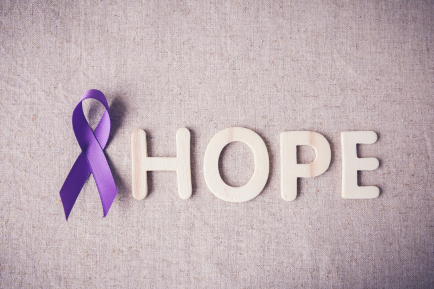When it comes to health and wellness, plenty of attention is given to exercise, eating right, and preventive care. A topic less often discussed—but equally important to health—is domestic violence, also known as intimate partner violence or IPV.
October is National Domestic Violence Awareness Month, and we wanted to take a moment to shed some light on this issue. Below you’ll find common IPV myths, resources for getting help, and information on helping a friend or family member you believe is experiencing abuse.
One place to begin addressing this pervasive health issue is by understanding it. IPV is an umbrella term for physical, sexual, or psychological harm by a current or former partner or spouse. One in three women and one in four men have been victims of some form of physical violence by an intimate partner within their lifetime. And on average during one year, more than 10 million people are physically abused by an intimate partner in the United States.*
Myths and Truths about IPV
(Adapted from the Womenspace booklet Intimate Partner Violence (IPV): What It Is, How to Recognize It, What You Can Do About It.
Myth: If they didn’t want to be abused, they would leave.
Truth: Threats by the abuser often make it safer to stay for both the survivor and the children. In addition, survivors who leave their abusers may face poverty, unemployment, and homelessness if they leave. Many have been isolated from their family and friends and simply feel like they have nowhere to go.
Myth: IPV occurs only in poor, poorly educated, minority or “dysfunctional” families.
Truth: IPV affects people of all races, from all cultures, countries, religions, and socioeconomic backgrounds. Perpetrators of IPV include doctors, ministers, police officers, and business executives. Victims of abuse can be in anyone’s neighborhood.
Myth: Abusers get angry and lose control
Truth: Abusers don’t lose control, they take control – by yelling, manipulation, or physical violence. Someone with an anger problem directs anger at everything around them. Abusers don’t treat others the way they treat partners; they control their anger in public, and target their partner in private.
Myth: The survivor provoked the situation and is to blame
Truth: The only one to blame for an abuser’s behavior is the abuser themselves. Many survivors make numerous attempts to change their own behavior in the hope that the abuse will stop. But it won’t make any difference – abusive behavior is a choice.
Myth: Alcoholism and drug use cause IPV.
Truth: Abusive patterns of power and control are not caused by alcohol or drug use, although this is often used as an excuse to justify the abuse. Again, abuse is a choice.
How to Get Help for Yourself
Call the National Domestic Violence Hotline: (800) 799−7233 or TTY (800) 787−3224.
Chat online: TheHotline.org has advocates available to chat daily from 5 a.m. to midnight Pacific Time.
Find a shelter: DomesticShelters.org has a search field where you can quickly find a shelter near you.
Not sure if your relationship is abusive? The National Coalition Against Domestic Violence (NCADV) has a list of common signs at NCADV.org/signs-of-abuse.
Get healthcare: “It’s important to address the underlying effects of abuse on physical and mental health, including anxiety, depression, and PTSD,” says Annette Willsey, a Behavioral Health Team Lead at PacificSource, who has a background in domestic violence victim assistance. Most individual and small employer health insurance plans are required by the Affordable Care Act to cover mental health.
If you’re uninsured and don’t qualify for coverage through Medicaid, you can get low-cost health care at a nearby community health center. To learn more, visit Healthcare.gov/community-health-centers.
How to Help Someone Else
If you’re concerned that someone you care about is experiencing abuse, it can be difficult to know what to do. Here are some tips:
- Acknowledge that they are in a difficult and scary situation, be supportive, and listen.
- Be nonjudgmental.
- Encourage them to participate in activities outside the relationship with friends and family.
- Help them develop a safety plan.
- Encourage them to talk to people who can provide help and guidance.
- Remember that you cannot “rescue” them.
Read more at TheHotline.org/help/help-for-friends-and-family.
PacificSource Involvement
PacificSource has a tradition of providing financial and volunteer support for local charities that improve the quality of life in your community. Here are two examples of how our employees have put time and energy into supporting domestic violence organizations.
- In 2017, Womenspace was chosen as our Charity of Choice for our Eugene-Springfield area. Through a variety of events, employees raised awareness and more than $11,000 for the organization.
- In 2015, employees raised $12,500 for The Women’s and Children’s Alliance, our Idaho Charity of Choice that year.
*Source: NCADV.org/statistics
[thrive_leads id=’406′]

